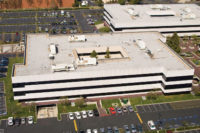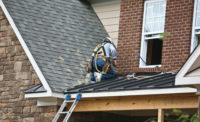One of the most frequently discussed topics in commercial roofing involves the role of roofing warranties and their contribution to roof-system quality. Although some industry stakeholders may caution that warranties are mere marketing gimmicks that only help promote lower quality and provide an easy out for roof-system manufacturers, my personal involvement with billions of square feet of warranted roofs reveals a much different story. In fact, my experience suggests that manufacturer roof-system warranties have made a significant contribution to increasing the long-term performance and sustainability of modern commercial roofing systems.
Before I started my roof-consulting business eight years ago, I had the opportunity to serve as a key executive for a major commercial roofing manufacturer. During my 22-year tenure, my personal signature was printed on more than 2 billion square feet of roof-system warranties. As a result, I had a very keen interest in the fundamental principles of roofing warranties and how they must be treated from a technical and business perspective, especially by a large, publically traded roofing manufacturer.
The first and most important principle of roof-system warranties is that the issuing manufacturer must record all warranty income as deferred revenue subject to future payout of potential warranty claims. This means that although warranty revenue may provide a brief uptick in short-term cash flow, this revenue provides a very small contribution to the company’s annual bottom line.
The second principle of roof-system warranties is that almost all roof-system manufacturers must provide evidence to an external auditor (in my case, one of the “big four” accounting firms) that the amount of deferred revenue on the books is adequate to cover all anticipated warranty claims until the very last warranty expires. That means not just enough money to cover the warranty expenses for the current year, but the next year, and the year after that, all the way to the end of what may be 10-, 20- or even 30-year warranty terms. And, if the external auditor is not convinced there’s enough money in the “kitty,” additional funds may need to be added above and beyond what’s normally collected in warranty fees.
For those of you running companies with outside auditors (which means almost anyone who needs bonding capacity), I’m sure you’ll agree that meetings with the auditors are not among the most pleasant of activities. In my role as the chief quality assurance officer for a major roof-system manufacturer, I had to meet with some of the toughest external audit professionals and successfully explain that our company’s warranty reserves were sufficient to cover all expected claims for the next 20 years or more.
This obligation to assure that the company warranty reserves were adequate to cover all expected costs influenced almost every aspect of our company’s operations. In terms of products, we were constantly trying to improve quality, especially in terms of making our products simple and easy to install — and just as simple and easy to repair. As a result, I was part of a team that developed many of the high-performance products used today to improve roof-system performance, including tape seams and flashings, high-solids primers, stand-up tools and many more. From a business perspective, we continuously strived to integrate quality into our business relationship with roofing contractors. In fact, I was part of the team that coined the term “quality incidence rating,” or QIR, which led to the first annual quality report cards for licensed roofing contractors. Finally, we built a professional team of roof inspectors, warranty administrators and field investigators to drive down long-term warranty costs to the point that we could publish research showing that warranty-related repair expense had dropped more than 80 percent during the first two decades of our company’s existence. Although I may sound a little proud of these accomplishments, I don’t think my personal involvement was any different than that experienced by my counterparts at other major companies. Overall, I believe that the commercial roofing industry has made enormous strides in roofing quality and long-term performance, and that in turn makes today’s roofing systems much more sustainable than roofs installed many years ago.
So, when some so-called roofing “expert” tells you or your customers that roofing warranties are only a marketing gimmick, please share my personal experiences, and don’t forget these key takeaways.
- Roofing warranties require manufacturers to account for and successfully manage their potential warranty obligations. These obligations must be backed by audited financial reserves.
- Roofing warranties incentivize manufacturers to continuously improve roof-system performance, both in terms of product quality as well as ease of installation and repair.
- Roofing warranties help build a solid long-term business relationship between manufactures and roofing contractors based on mutual respect, integrity and quality.
- Roofing warranties keep a line of communication open among manufacturers, contractors and building owners for decades after a roof has been installed.
- Roofing warranties provide long-term assurance to building owners that roof-system manufacturers and roofing contractors are working together to provide the best roofs possible.
Adding this all up, roof-system warranties make a significant contribution to increasing the sustainability of roofing systems. Because of the common use of roofing warranties in commercial construction, roof service life is increasing, roofs are easier to install and repair, and roofs are part of a sustainable, long-term business relationship between roof system manufacturers, roofing contractors and building owners.




